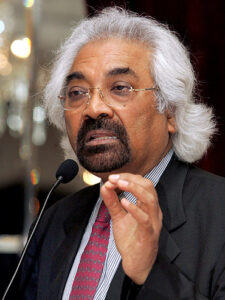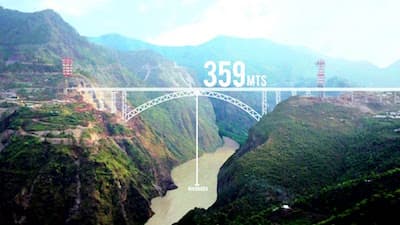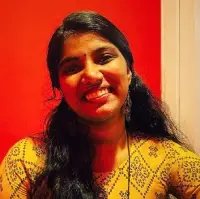Table of Contents
International days are marked to educate the public on issues of concern, address global problems, and celebrate and reinforce the achievements of humanity. Each international day provides the community an opportunity to organize activities related to the theme and to create public awareness on the same. Organizations, governments, public and private sectors, schools, universities, and citizens make the international day a springboard for awareness-raising actions. In this article let us check on the Engineer’s Day 2022 in India, History, Activities, and Quiz
Engineer’s Day 2022 in India – Tuesday,15 September
In this article, readers can get a glimpse on
- History, about Sir M Visvesvaraya
- Engineers day around the world
- Observation of Engineers day – activities
- Engineer’s day Quiz
History of Engineer’s Day – An Overview
Engineer’s day is one of the most significant events that is celebrated in India The day is dedicated to all the engineers who changed the world with their creative innovations. From the invention of the wheel to the modern-day drones, engineers have provided the vital push for the progress and development of technology. The day is celebrated to salute the contribution of the engineers towards society.
India marked September 15 as engineer’s day to appreciate the contributions of Mokshagundam Visvesvaraya who was born on September 15, 1861, in a village called Muddenahalli in Karnataka. A Bharat Ratna awardee, Visvesvaraya had studied Bachelor of Arts (BA) from the University of Madras and pursued civil engineering at the College of Science in Pune.
About Sir M Visvesvaraya
- Sir Mokshagundam Visvesvaraya, KCIE (popularly known as Sir MV; 15 September 1860 – 14 April 1962), FATHER OF ENGINEERS, was an Indian engineer, scholar, statesman, and the Diwan of Mysore from 1912 to 1918.
- He is a recipient of the Indian Republic’s highest honor, the Bharat Ratna, in 1955.
- He was knighted as a Knight Commander of the British Indian Empire (KCIE) by King George V for his contributions to the public good.
- He is best remembered for the instrumental role he played in the construction of the Krishna Raja Sagara Lake and dam in 1924. This dam not only became the main source of water for irrigation for the nearby areas but was also the main source of drinking water for several cities.
- During the decade of the 1900s, Hyderabad city was reeling under the threats of the flood. He supervised the engineering work at Hyderabad by lending his services as a Special Consulting Engineer in 1909.
- He was appointed as the Chief Engineer of Mysore State in 1909
- He helped in the founding of the Government Engineering College at Bangalore in 1917 which was later renamed the Visvesvaraya College of Engineering in his honor.
- He was awarded independent India’s greatest honor, The Bharat Ratna in 1955 for his relentless work in the fields of engineering and education. He is the recipient of several honorary doctoral degrees from eight universities in India.
Attempt Daily quiz by subscribing to Entri
Engineer’s Day Date Around the World
Different countries observe Engineer’s day on different dates. Below mentioned are the days in which engineers day is observed in different countries
| Engineer’s day in different countries across the world | |
| Argenta – June 6 Australia – August 4 to 10 Bahra – July 1 Belgium – March 30 Bolivia – October 6 Brazil – December 11 Bulgaria – February 17 to 23 Canada – March Chile – May 14 Colombia – August 17 Costa Rica – July 20 Domican Republic – August 14 Ecuador – June 29 Egypt – September 21 or 22 France – April 3 Honduras – July 16 dia – September 15 Iran – February 24 Ireland – February 9 to 15 Italy – June 15 Korea – March 30 Luxembourg – February 8 Malaysia – September 7 to 15 Mauritius – September 13 Mexico – July 1 |
Nepal – July 18 Netherlands – third Wednesday of March Pakistan – January 10 Panama – January 26 Perú – June 8 Poland – August 14 Portugal – November 23 Puerto Rico – May 13 to 19 Romania – September 14 Russia – December 20 Singapore – October 23 and 24 Slovakia – March 16 Slovenia – September Spa – March 19 Taiwan – June 6 Tanzania – September 4 and 5 Tunisia – October 26 the United Kingdom – March 14 to 23 the United States of America – February 16 to 22 Uruguay – October 12 Venezuela – October 28 |
Observation of Engineers day – Activities
Following are few activities that can be organized to appreciate and highlight the works of engineers.
1. At schools students Engineers week can be organized with various activities and competitions. Activities like robotic competitions, lego design building, projects out of recyclable materials and various STEM competitions can be conducted to explore the little engineer’s creativity and talents
2. Various Competitions like hackathons can be conducted at engineering colleges to enable the students to utilize their skills to the best of their ability. Workshops can be organized by engineering students inviting the high school students and helping them learn more about the scope for engineering.
3. Career fairs can be conducted exclusively for the engineering field and helping students figure out which branch of engineering can be selected by them based on their passion
4. Identify the engineers in your family and friends circle and let them know their value in society and also appreciate their works
5. Encourage women in Engineering. Give students examples of female engineers such as Debbie Sterling, the founder of GoldieBlox. Give support to the female engineers around and help them in achieving their targets if they need support from others
6. Use social media platforms to provide public recognition to the engineers across the world and also create awareness to the society about the great achievements of the engineers
7. Organisations and offices can conduct activities to encourage and appreciate the little innovative minds among them.
Subscribe Entri for more details on International days
Engineer’s Day Quiz 2022
1. Which bridge, built between 1924 and 1932, is the widest long-span bridge in the world?
A) The Golden Gate Bridge, US
B) The Sydney Harbour Bridge, Australia
C) The Akashi Kaikyo Bridge, Japan
D) Jiangyin Suspension Bridge, China
Answer: b) The Sydney Harbour Bridge is the widest long-span bridge in the world. Including two rail tracks, eight-car lanes, a cycleway, and a pedestrian footway, its total width is 48.8m. The world’s longest bridge is the Second Lake Pontchartrain Causeway, which stretches over 32km across a lake in Louisiana, US. The longest suspension bridge is the Akashi Kaikyo Bridge in Japan, which opened in 1998, and is 1990 meters long.
2. Name the location of this engineering marvel.
Correct Answer: Jammu and Kashmir
Explanation: It’s the Chenab Bridge!
It’s a railway steel arch bridge under construction between Bakkal and Kauri in the Reasi district of Jammu and Kashmir in India. When finished, the bridge will span the Chenab River at a height of 359 m (1,178 ft) above the river, making it the world’s highest rail bridge.
3. Who was the First Indian scientist who got the nobel prize in 1968 for deciphering the genetic code?
Correct Answer: H.G. Khorana
Explanation: The 1968 Nobel Prize for Physiology or Medicine was awarded to Har Gobind Khurana with Marshall W. Nirenberg and Robert W. Holley for research that showed how the order of nucleotides in nucleic acids, which carry the genetic code of the cell, control the cell’s synthesis of proteins.
4. What is the world’s tallest free-standing structure?
A) Eiffel Tower, Paris, France
B) CN Tower, Toronto, Canada
C) Sears Tower, Chicago, US
D) Taipei 101, Taipei, Taiwan
Answer: b) The CN Tower, Toronto, Canada is the tallest freestanding structure in the world (554m to the top of the antenna) – although newer and taller ones are under construction. The highest building debate continues to rage with most of the world’s tallest structures radio or tv broadcasting towers. The highest supported structure is the KVLY-TV mast in Dakota, US (629m). Taipei 101 is the tallest habitable building (509m to the top of spire). The Sears Tower is 527m to the top of its antenna. The highest structure built at sea is the Petronius Platform, an oil rig in the Gulf of Mexico that is 610m high but only 75m above sea level.
5. What are the tiles of the Sydney Opera House made of?
A) Glazed ceramic
B) Limestone
C) Italian marble
D) Glazed granite
Answer: d) Glazed granite. The glazed granite tiles are robust and self-cleaning, but periodically need to be replaced. In 2003, a $151,000 clean-up of the opera house’s highest sail was commissioned to remove the slogan ‘No war’ painted in protest of the commencement of the Iraq War.
6. What is the tallest residential building?
A) Q1, Australia
B) West Point Tower, the Netherlands
C) Hyperion Tower, South Korea
D) Millennium Tower, Vienna
Answer: a) Q1, Australia. The 80-story Queensland Number One or Q1 at Surfer’s Paradise on the Gold Coast is currently the world’s tallest residential building at 323 meters, but will shortly be overtaken by structures nearing completion in Dubai (Princess Tower, 23 Marina) and superstructures planned for the distant future in Tokyo.
7. What is the largest hole ever dug in the Earth?
A) The Panama Canal, Panama
B) Kennecott’s Bingham Copper Mine, Utah, USA
C) The Big Hole, Kimberley, South Africa
D) Excavation for the West Edmonton Mall, Alberta, Canada
Answer: b) Kennecott’s Bingham Copper Mine in Utah is the largest open-pit mine in the world and the largest human-made excavation. Over 4 km in diameter, it represents the removal of more than 15.3 cubic km of Earth. At 1000m depth the Big Hole diamond mine in Africa is the deepest hole dug in the Earth. The West Edmonton Shopping Mall is one of the world’s largest shopping malls and covers 0.5km sq.
Top Engineers In India – List of Top Engineers
1. Mokshagundam Visvesvaraya
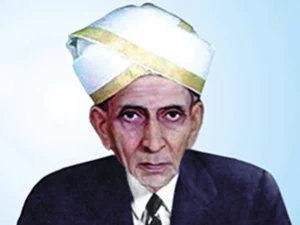
2. Satish Dhawan
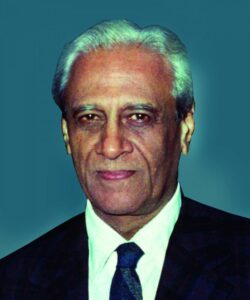
3. E. Sreedharan
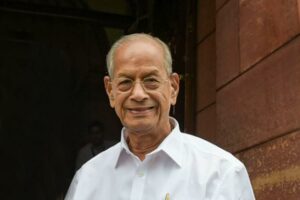
4. A. P. J. Abdul Kalam
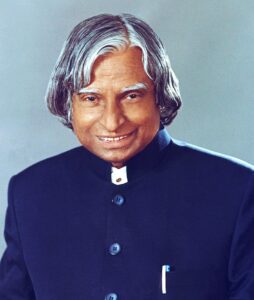
5. Verghese Kurien
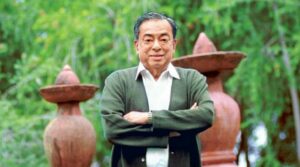
6. Satyan Gangaram Pitroda
